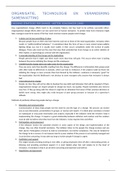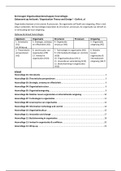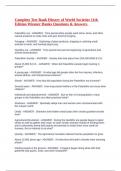Samenvatting
Samenvatting Organisatie, Technologie & Verandering Artikelen boek RUG BDK TM
- Instelling
- Rijksuniversiteit Groningen (RuG)
Samenvatting van het boek "Exploring Strategic Change" (4e editie), en alle verplichte artikelen voor het vak Organisatie, Technologie & Verandering van de Rijksuniversiteit Groningen van de studie Bedrijfskunde TM. Artikelen: - CHOOSING STRATEGIES FOR CHANGE – KOTTER, SCHLESINGER (2008) - ...
[Meer zien]














